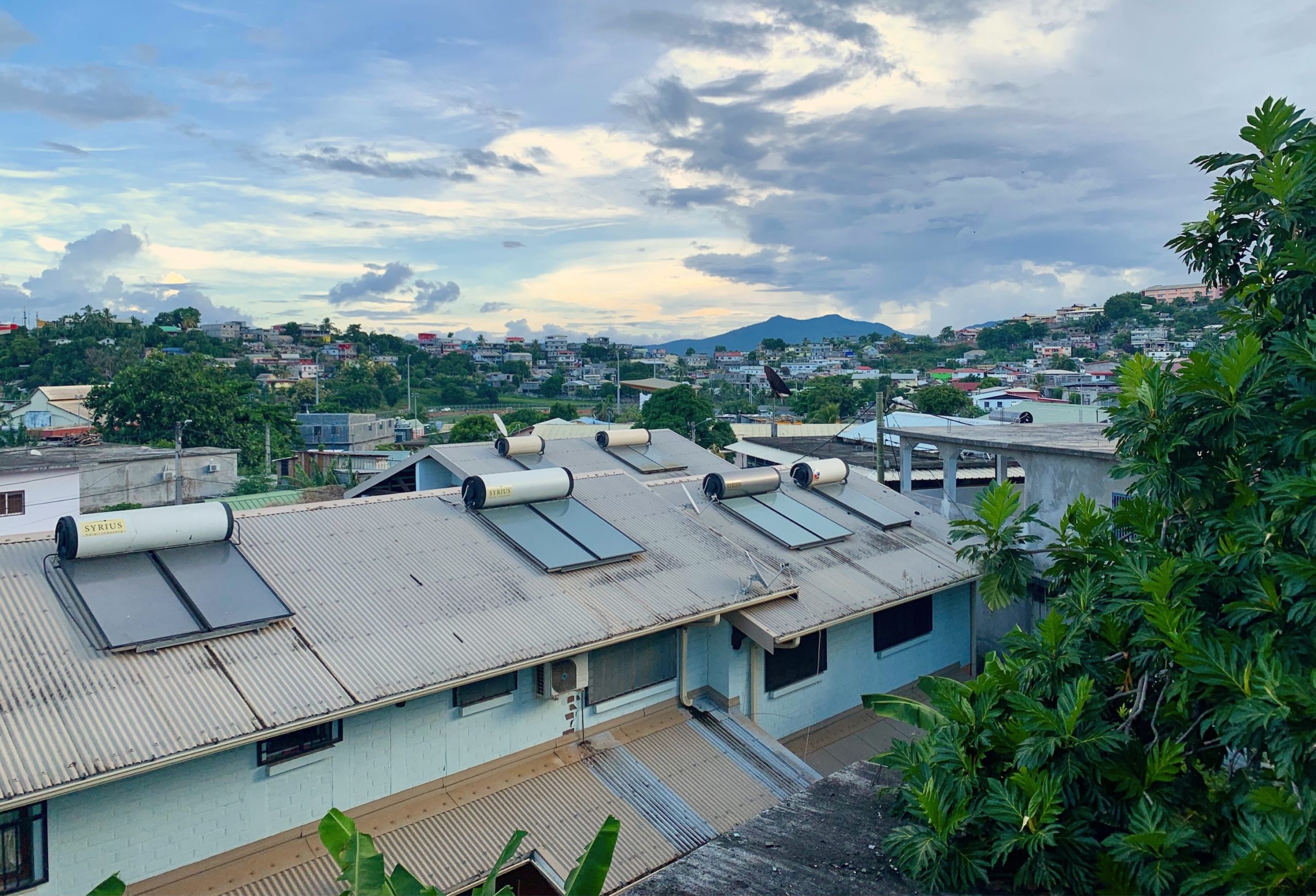
Author: Anna Siegert interviewed by Clara Tatlow-Devally
Anna begins by telling me that at the heart of MAESHA, and the core responsibility of Hudara in this project, are initiatives referred to as “energy communities”. They form the fundamental structure of the project:
Anna: An energy community is a group of people, citizens, who come together and engage in actions that contribute to a clean energy transition. It’s open to everyone, and participation is voluntary. Its core purpose is to benefit the community. Social, environmental or economic.
Clara: Can you give some examples of the energy communities that were set up to facilitate Mayotte’s transition to sustainable energy?
Anna: There’s a really big variety of energy communities. I mean, energy is quite a big field, right? We have one community focusing on mobility. In Mayotte, one problem is that, apart from the ferry and school buses, there’s no public transport. So, we are working with the start-up “Mob’Helios” on e-bikes and bike sharing. Bikes aren’t big in Mayotte, hardly anyone has one. They’re becoming more popular now, but there’s no repair services. So, we are setting this up. Another energy community is at the University Centre. We started a student association, and they are conducting workshops [on climate change] and the energy transition for students from the University. A few energy communities are about social housing. We have a social housing scheme with the municipality where people from metal sheet settlements could relocate to permanent housing, where we are organising the implementation of solar panels.
The MAESHA project has formed 11 energy communities, each one focusing on a different aspect of the energy transition, each one working to include community members in decision making as a clean and just energy transition is planned. Energy communities serve as a platform for discussions, idea sharing, and education. Anna explains that an initial challenge in the project was the lack of knowledge about energy and climate change in Mayotte:
Anna: Knowledge about climate change and energy, what energy actually is, where it comes from, and so on, is low on the island. Electricity is a big problem because Mayotte is highly dependent on fossil fuels coming from overseas, which is quite expensive and pollutes the environment.
Clara: With a low level of knowledge about energy and environmental issues generally, has it been difficult to get people involved in energy communities? What incentivizes people to join?
Anna: What will people get out of it: this is always the question, because no one would [join] if their interests or needs were not being met somehow. For the solar panel installation, it is about being independent from the grid for energy sources, as well as saving money on electricity. For the bike technicians it is about job creation, having a job for the long term. […] If people see a secure job market developing where they can invest their knowledge on energy transition, there will be an incentive to become involved. Awareness raising at the University is about students wanting to engage in something different. It is good for their education and their CVs to build an association, to shape something together, and develop soft skills. Every community is centred around their own needs. And on Mayotte often the environmental aspect is not central to those needs, but rather something that comes along with it.
Clara: This initiative aims to decarbonise multiple EU islands and its potential for replication will be studied for this purpose. From your personal experience on the project, what do you see as the challenges in replication? Is the work you do predominantly influenced by context specific requirements, or by the aims and objectives of the broader project?
Anna: So, from the Hudara side, our perspective is bottom-up, context specific. This is how I work because without the context I can’t establish anything concrete. […] Context is so important. If the context is totally different, if the project is replicated on a wealthy island, for example, then financial profits or job creation might not be relevant. Maybe the environmental perspective would be the approach in that case. However, I think the overall steps on how to set up projects, how to set up communities are similar. It’s about human beings everywhere, cooperating, trying to set up something or establish something together.
Anna describes a dynamic project; one that relies on the relationships built with the people on the island. Developing trust and delivering education and outreach in order to foster citizen action and genuine community participation has been her focus.
Mayotte is part of a group of small islands, situated between the coast of Mozambique and Madagascar. Neighbouring the three islands of Comoros, governed as an overseas department of France, the context of Mayotte spans across continents.
For centuries Mayotte has been subject to invasion, abandonment, and violence at the hands of monarchs, traders and colonial powers. In 1841 France purchased Mayotte, extending its colonial project to these islands. What followed was the exploitation of the islands’ resources, and their inhabitants, over the course of some 120 years.
In stark opposition to neighbouring Comoros, Mayotte’s population has nevertheless voted to maintain its links with France. This connection makes Mayotte the outermost region of the EU, and the wealthiest island among others in its geographical location, although Mayotte remains relatively poor compared to its mainland European counterparts.
When I ask Anna about the socio-political landscape of Mayotte from her perspective – an outsider who has become embedded in aspects of communities in Mayotte over the last two years – she describes a place and people struggling to manage, as tensions build across community lines:
Anna: Every day boats arrive full of people who are just seeking a future. I don’t have the number in my head, but in there is a rapid population growth – and it’s a tiny island in terms of territory. And even though Mayotte is a part of France, you need papers to get to other parts of the EU. So, many people arrive in Mayotte and are then stuck on the island.
There are so many different cultures there, and conflicts between cultures, between the Mahorais and migrants living in Mayotte. There are many people from the Comorian Islands living in Mayotte and they are badly treated on the island. Conflict arises when so many people are coming together, especially when they are in vulnerable positions. This is the reality that can’t be ignored.
I ask Anna what it is like for her to work in this context – where violence and poverty are persistent problems, and anti-immigration sentiment is growing – with the aim of fostering community participation. To what extent do the divides in society come into the work? Is this something that needs to be confronted?
Anna: It plays a pretty dominant role because people sometimes just will not cooperate with each other if they’re from different social groups. You have to place your own beliefs aside and adapt to the context, working with already established structures. For instance, one of the bike technicians said he couldn’t go to a certain place that he needed to go to, to pick up a bike, because he was afraid. Violence is a big problem.
In the community that I work with people had few established relationships with people from another community and there was no way, from what I understood, that they would work with each other. There was just no way. Because the tensions just sit so deep. I mean, this is history, this is years of experience and strong political opinions clashing against each other. You can’t just break these tensions down easily for a project like this. It’s just not possible.
However, in established structures, like at the university, you can create an association, like a student association. Or with the housing schemes where people already live next to each other, you can foster cooperation there. That’s why we are so reliant on people. We are also reliant on] municipalities and our local partners. I think the most important thing is to be flexible and adapt to the context and the reality.
Clara: From what you have shared, it is clear that reflection has been central to your approach. You’ve been presented with some challenges over the last two years, and you’ve had a lot of successes, too. You have worked with multiple partners and communities on site and remotely to implement outreach, education and training activities. You’ve coordinated the development and construction of multiple sites in Mayotte. You’ve built relationships based on trust and respect, and formed communities based on equal partnerships and shared interests. It’s taken hard work and dedication. For my final question I’d like to know: what inspires you?
Anna: For me it’s about seeing the impact. Seeing that things are moving forward, even if it is slow. And appreciation, seeing smiles and people saying thank you. And being grateful to others, the exchange in working with others and thanking them. Looking back on where we started compared to where we are now. That keeps me motivated.












